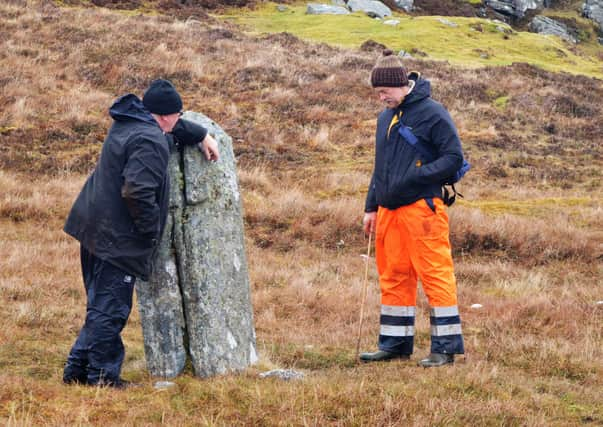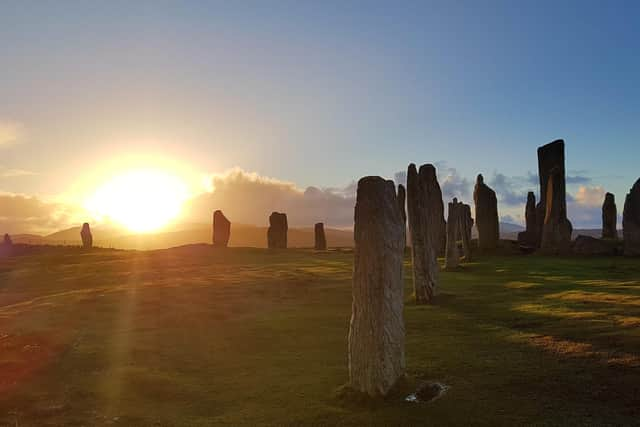Hidden ancient stone circles are rediscovered


Now the Na Dromannan stone circle can be seen for the first time in more than 4000 years after it was reconstructed in 3D after community volunteers helped to survey the satellite stone circle.
The site, which sits close to the famous Calanais Standing Stones, was reconstructed by the Open Virtual Worlds Team at St Andrews University after stones buried in the landscape were mapped and measured.
Advertisement
Hide AdAdvertisement
Hide AdNa Dromannan is one of a number of circles that became submerged in the peat of Lewis over time experts believe.


The new project will allow the team to extend the investigations to the other stone sites and importantly to map the Neolithic landscape buried beneath the peat and submerged offshore.
Another, Site XI or Airigh na Beinne Bige, today consists of a single standing stone on an exposed hillside overlooking Calanais.
But a geophysical survey by archaeologist Dr Richard Bates and his team from St Andrews University revealed that not only was the stone originally part of a circle of standing stones but that the centre had been struck by either a huge bolt or lightning or a number of smaller strikes on the same spot.
Advertisement
Hide AdAdvertisement
Hide AdInvestigations are now set to get underway into other stone circle sites which have become lost to the ground in Lewis.
Dr Bates said: “We are extremely pleased to be working with Urras nan Tursachan (UNT) on this exciting new project The landscape holds so many fascinating secrets that we hope can be addressed through a combination of geophysical remote sensing and boots on the ground with the local community volunteers.”
The cross shaped setting of stones at Calanais were put in place around 5000 years ago.
They predate Stonehenge and were an important place for ritual activity for at least 2000 years.
Advertisement
Hide AdAdvertisement
Hide AdThe project is one of 18 community based projects receiving funding from Historic Environment Scotland (HES) to protect, promote or engage with Scotland’s coastal or waterway heritage as part of its Coast and Waters Heritage Fund.
Grants of £3000 to £20,000 from an overall fund of £194,349 have been awarded to projects which deliver benefits to the local community through outreach and educational activities, repairs to stabilise historic or marine structures, developing traditional skills and increasing understanding of Scotland’s coasts and waters heritage. Funding has also been awarded to projects which are adapting to climate change.